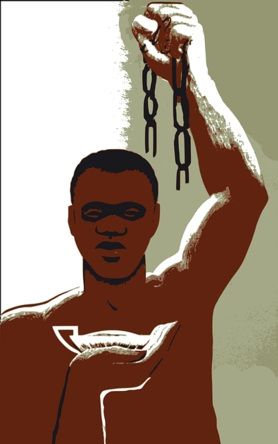Bayano, the king of the Maroons and historical enigma: Questions about the character
Was Bayano a Maroon? Exposing the life of this man who, according to history, was considered in the mid-sixteenth century as the "king of the maroons" or leader of the black slaves.

The word maroon (cimarrón) can be understood as "the one who flees to the bush, thief, the one who does misdeeds", although, from another perspective, it can be considered the person who "goes to the bush to be close to nature, the one who seeks a dignified life, who works, but above all who fights for freedom."
This story refers to the origin of the colonization of the Caribbean coasts of the Isthmus of Panama in 1510. Ferdinand the Catholic, upon learning four years later that the region was immensely rich in gold, sent 2,000 men to establish their residence; however, misery, insalubrity, and hunger quickly decimated a large number of them who had enthusiastically set out on a journey of no return to Auriferous Castile.
Beginning in 1514, the civil and ecclesiastical authorities were authorized to take black slaves with them for their care. According to historians, on August 15, 1519, the Villa de Panama was founded, the first Hispanic city on the Pacific coast. Following the example of the natives of the islands who took refuge in the most remote places to escape from the Hispanic harassment, soon after their arrival, the blacks began to escape.
In 1535, under the orders of a slave named Damian, a group of blacks planned to set fire to the city of Panama, but were betrayed by another slave; surprised, they confessed with the torment of " club and water". Some were punished with banishment and others with death. But neither Damian, leader of a frustrated urban rebellion nor Felipillo, another leader of the exploited slaves, accused of destabilizing the economy of the colony, have deserved the recognition of "king of the maroons".
Such category was granted to Bayano, a character, who is said to be the leader of the black slaves who, fleeing from the control of the masters, dedicated himself to all kinds of misdeeds, attacking the traffic of the Royal Road and the neighbors of Panama and Nombre de Dios (Hispanic population center), causing enormous losses to the colonists.
Fray Pedro de Aguado, the most abundant source on Bayano and his men, says that the maroons chose "for their head and principal a black man of good disposition and strength, very ladino or Spanish in the language whom they called King Bayano."
So far it is unknown how long Bayano's uprising lasted; some say it was from 1552 to 1556, others say it was from 1556 to 1558. For some historians, he was an urban slave in charge of the president of the Audiencia of Panama, for others a recently arrived black man.
Among the contradictions that remain is the punishment Bayano suffered after his arrest. According to Aguado, he was sent to Seville, Spain, where "they honored him and received him happily by giving him some gifts", while others assure that he was hanged in Peru, or that he was betrayed by another cimarrón (runaway).
Gladys Casimir de Brizuela, Ph.D. in anthropology, asks: why honor him, what strange decision to favor someone who has caused so much damage to the colonial economy? Without questioning Bayano's struggle, the doctor considered that "Bayano's final destiny is as nebulous as his appearance on the scene", even though he is only known by that name.
Only 15 years after the founding of Panama City and 10 years after the entry of blacks to replace the indigenous labor force, a movement like this could only have been conceived by individuals who were born and grew up in the Hispanic culture and society, which is why the origin of Bayano is doubtful.
Although she acknowledged the existence of this character, the Panamanian specialist considered that history was manipulated. "Unquestionably Bayano was the king of the Maroons, we all carry a Bayano inside, but my question is: was Bayano a Maroon, the answer only exists by resorting to historical sources", concluded the researcher.
Source: INAH




